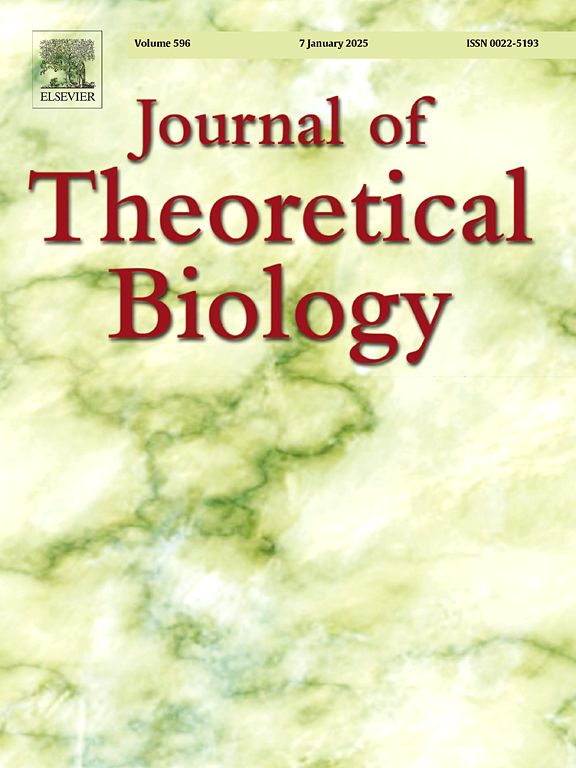Oscillation in the SIRS model
IF 1.9
4区 数学
Q2 BIOLOGY
引用次数: 0
Abstract
We study the SIRS epidemic model, both analytically and on a square lattice. The analytic model has two stable solutions, post outbreak/epidemic (no infected, ) and the endemic state (constant number of infected: ). When the model is implemented with noise, or on a lattice, a third state is possible, featuring regular oscillations. This is understood as a cycle of boom and bust, where an epidemic sweeps through, and dies out leaving a small number of isolated infecteds. As immunity wanes, herd immunity is lost throughout the population and the epidemic repeats. The key result is that the oscillation is an intrinsic feature of the system itself, not driven by external factors such as seasonality or behavioural changes. The model shows that non-seasonal oscillations, such as those observed for the omicron COVID variant, need no additional explanation such as the appearance of more infectious variants at regular intervals or coupling to behaviour. We infer that the loss of immunity to the SARS-CoV-2 virus occurs on a timescale of about ten weeks.
SIRS模型中的振荡。
我们研究了SIRS流行病模型,包括解析模型和方格模型。解析模型有两个稳定解,爆发/流行后(无感染,I=0)和流行状态(感染人数恒定:I>0)。当模型与噪声一起实现时,或者在晶格上,第三种状态是可能的,具有规则振荡。这被理解为繁荣与萧条的循环,一种流行病席卷而过,然后消失,只留下少数孤立的感染者。随着免疫力的减弱,群体免疫力在整个人群中丧失,流行病重复发生。关键的结果是,振荡是系统本身的内在特征,而不是由季节性或行为变化等外部因素驱动。该模型表明,非季节性振荡,例如在组粒COVID变异中观察到的非季节性振荡,不需要额外的解释,例如以定期间隔出现更多传染性变异或与行为耦合。我们推断,对SARS-CoV-2病毒的免疫力丧失发生在大约10周的时间尺度上。
本文章由计算机程序翻译,如有差异,请以英文原文为准。
求助全文
约1分钟内获得全文
求助全文
来源期刊
CiteScore
4.20
自引率
5.00%
发文量
218
审稿时长
51 days
期刊介绍:
The Journal of Theoretical Biology is the leading forum for theoretical perspectives that give insight into biological processes. It covers a very wide range of topics and is of interest to biologists in many areas of research, including:
• Brain and Neuroscience
• Cancer Growth and Treatment
• Cell Biology
• Developmental Biology
• Ecology
• Evolution
• Immunology,
• Infectious and non-infectious Diseases,
• Mathematical, Computational, Biophysical and Statistical Modeling
• Microbiology, Molecular Biology, and Biochemistry
• Networks and Complex Systems
• Physiology
• Pharmacodynamics
• Animal Behavior and Game Theory
Acceptable papers are those that bear significant importance on the biology per se being presented, and not on the mathematical analysis. Papers that include some data or experimental material bearing on theory will be considered, including those that contain comparative study, statistical data analysis, mathematical proof, computer simulations, experiments, field observations, or even philosophical arguments, which are all methods to support or reject theoretical ideas. However, there should be a concerted effort to make papers intelligible to biologists in the chosen field.

 求助内容:
求助内容: 应助结果提醒方式:
应助结果提醒方式:


